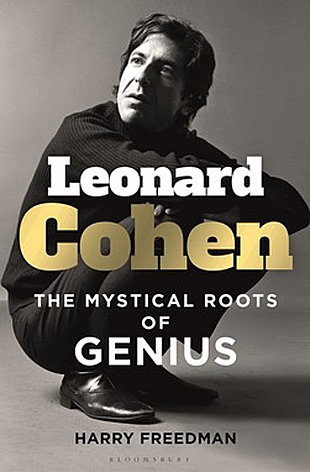“Leonard Cohen described arguably his most famous two lines, 'There is a crack in everything, That’s how the light gets in' as 'the closest thing I could describe to a credo. That idea is one of the fundamental positions behind a lot of the songs.'
“A succinct juxtaposition of despair and optimism, the couplet was described by a distinguished professor of Kabbalah as Leonard Cohen’s most paramount kabbalistic declaration. It is based on a creation myth expounded by the sixteenth-century kabbalistic master Isaac Luria. Widely regarded as the most innovative and influential of all kabbalists, Luria developed his mystical philosophy in the kabbalistic fraternity in Safed, northern Israel, where he spent the last three years of his short life.
“Luria’s creation myth attempts to explain how God created the cosmos. If God was all that existed, where could he place the physical universe? There was apparently no space outside of him where the world could be sited. And anyway, how could God, a wholly ethereal being with no physical aspect to him, create a material world? These were very real problems in an early modern world where religion and science still overlapped, where it was still possible for questions of cause and effect to have a mystical dimension.
“Luria’s solution was based on the concept of 'tzimtzum,' withdrawal. God created space for the universe by contracting his essence, withdrawing himself unto himself, leaving behind a void in which creation could take place. Yet, empty of God’s presence, the void was not completely vacant. Negative forces were left behind, forces that had originally been diluted and rendered insignificant by the vast expanse of divine light, but which now coalesced into a dense mass. From this mass the concrete, physical worlds, emerged. Negative in nature, the material worlds were lifeless, chaotic and unformed: they were the shapeless chaos described at the beginning of Genesis.
“Genesis tells us that God’s first utterance was 'Let there be light.' In Luria’s myth this was a ray of divine light that shot into the void he had created, animating the mass of negative energy and infusing it with spiritual vitality. The light expanded, forming itself into the shape of a human being, known as the Primordial Adam. Beams of light burst forth from the eyes of Primordial Adam, collecting into ten vessels constructed out of the negative energy that had remained in the void. The vessels were arranged in a hierarchy, those above being closer to the divine source of all, those beneath them progressively influencing the cosmos that was beginning to materialize below.
“But things started to go wrong. As more and more light flowed into the lower vessels, they became increasingly unstable. In a catastrophic eruption they shattered, their fragments and their light spiralling to the earth below. The sparks of divine light landed first, the shells of the vessels composed of negative energy landed on them, smothering them. The shells are still on the ground today; they account for the evil in the world. The sparks concealed beneath them are of divine light, seeking to be reunited with the source from which it was torn.
“Luria’s Kabbalah obliges us to remove the material covering that conceals the light, so that the sparks can ascend to their rightful place. This is done through the performance of good deeds, correct behavior, sincere prayer and the fulfilment of biblical commandments. The divine light may be concealed beneath the husks of materialism; good may be smothered by evil. But the shells cannot conceal the light completely; there is always a glimmer of hope. As Leonard Cohen sings,
There is a crack in everything.
That’s how the light gets in.”
